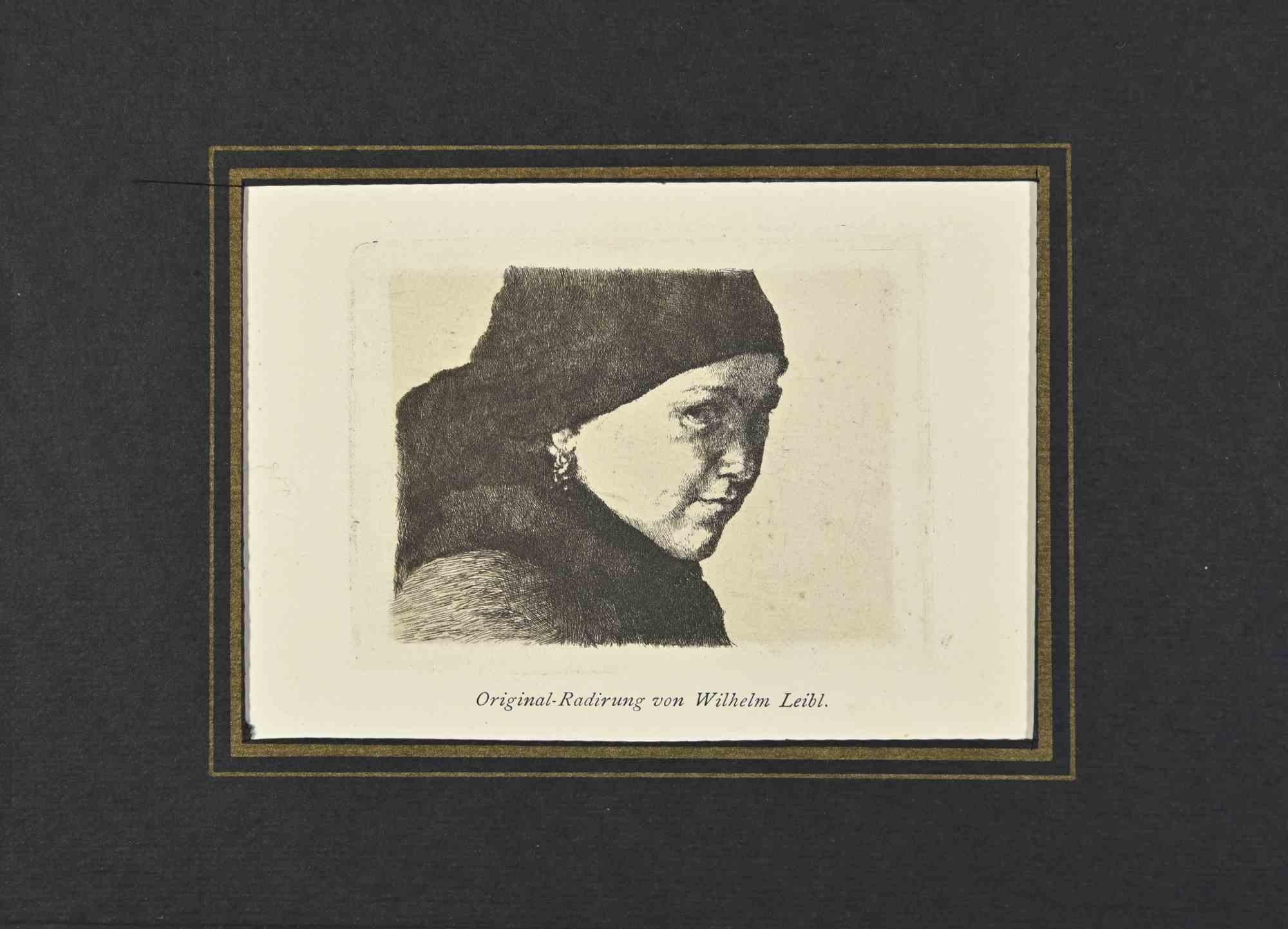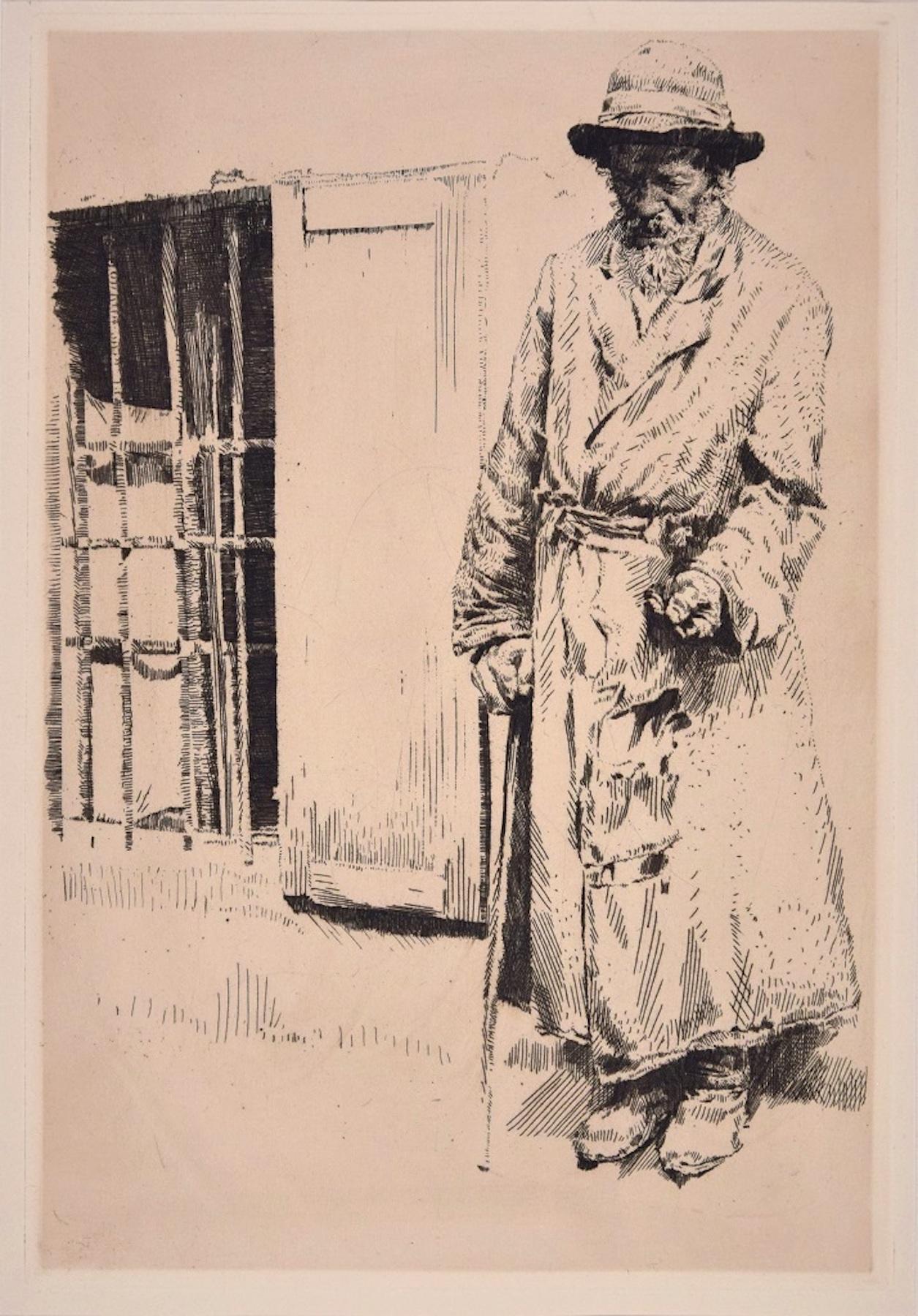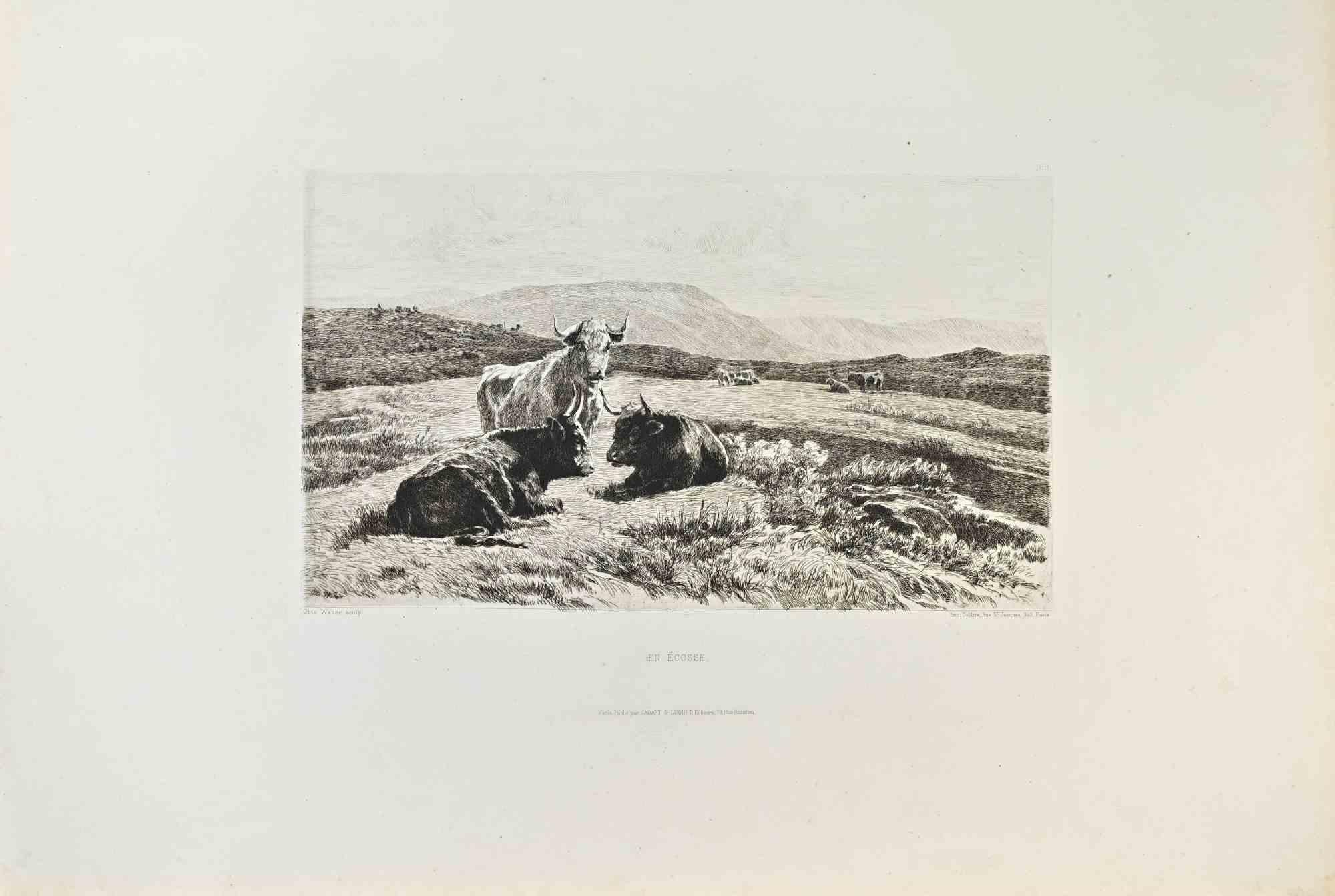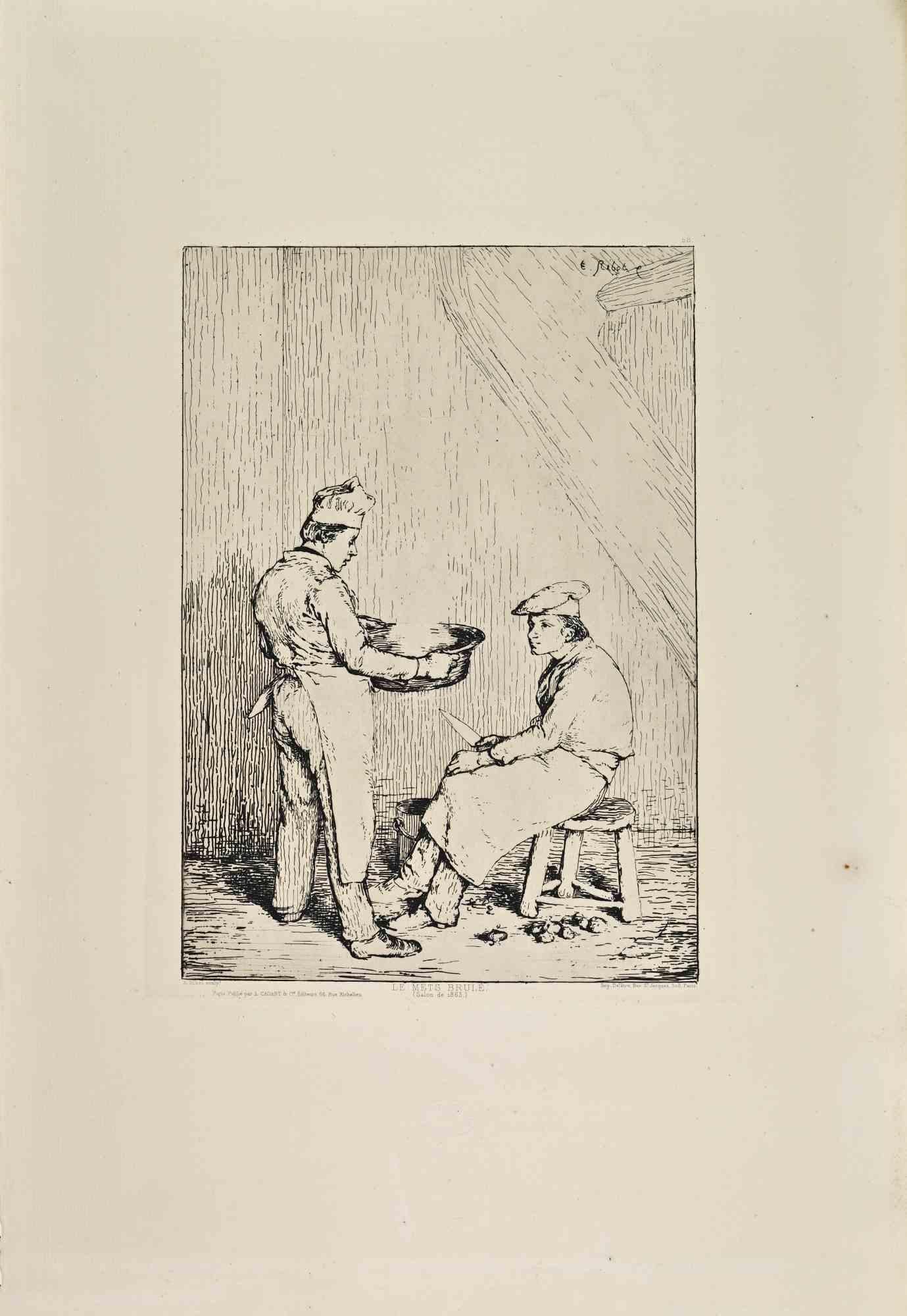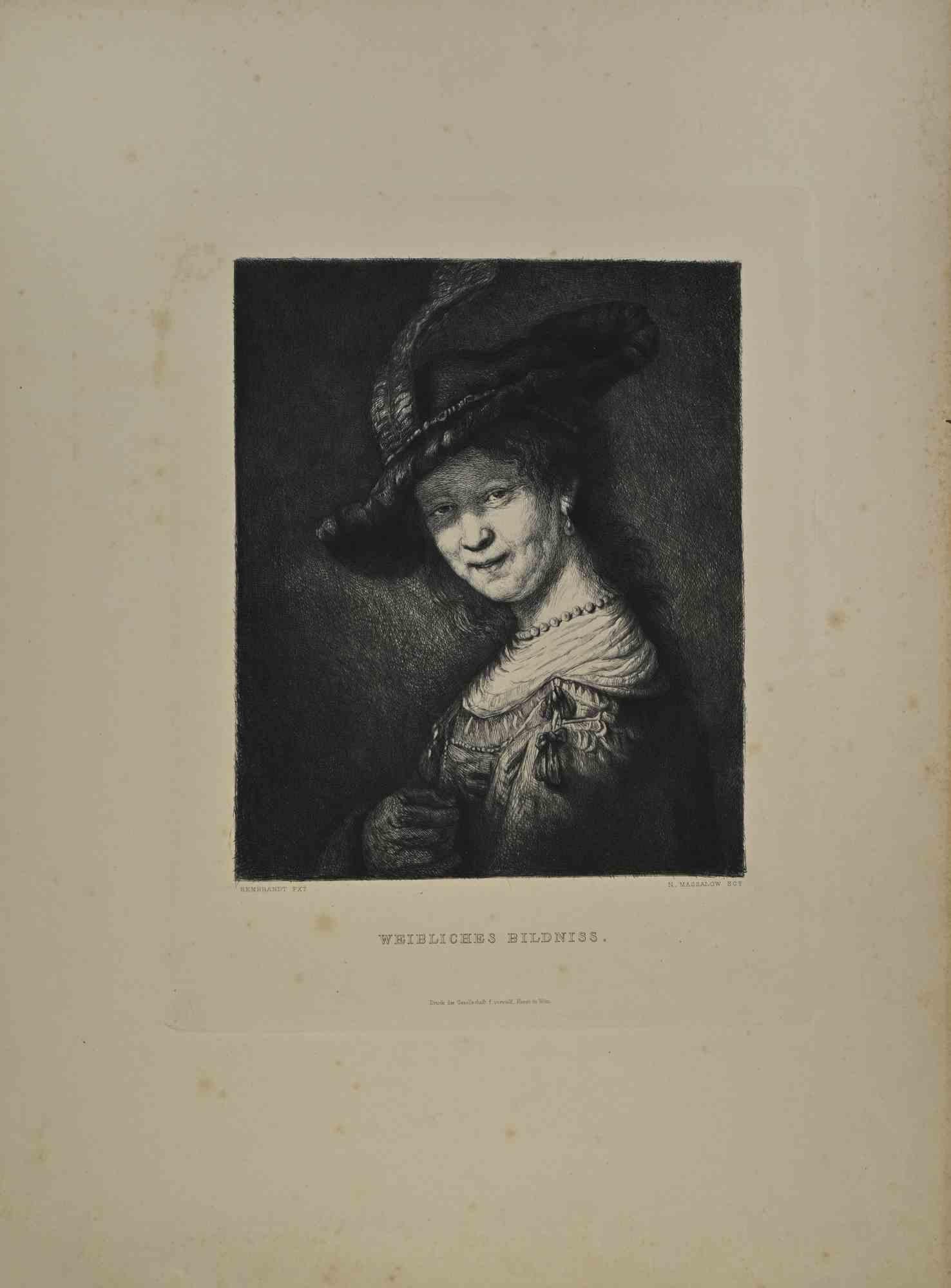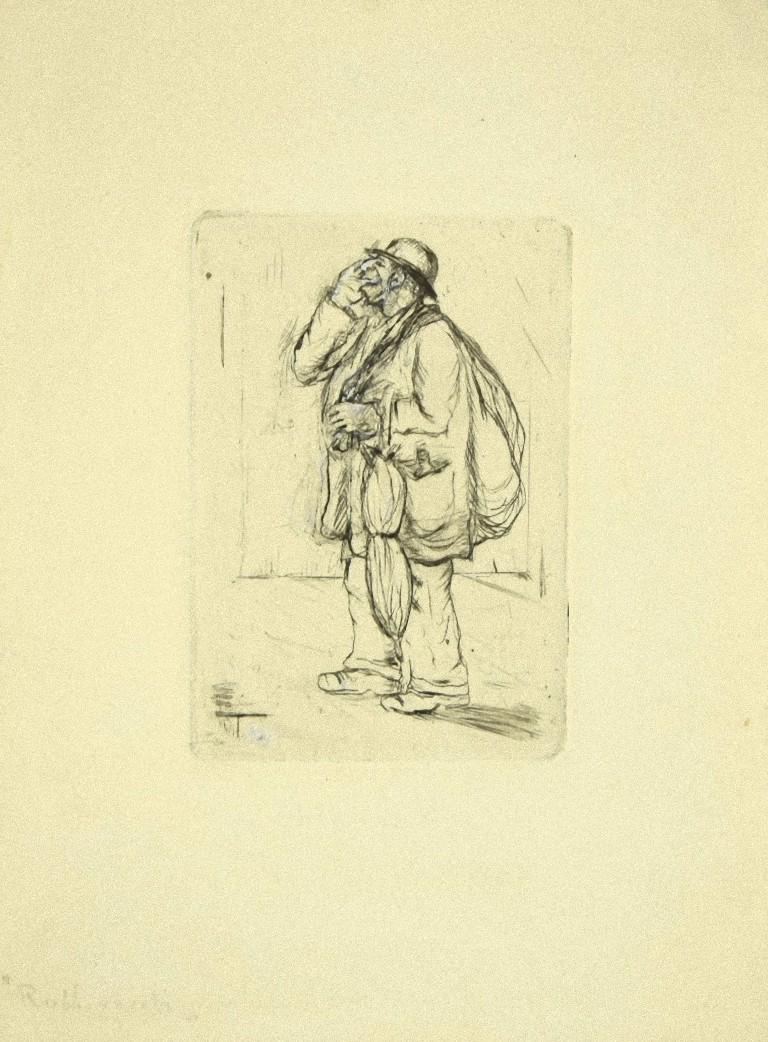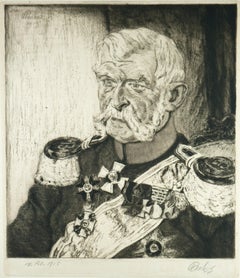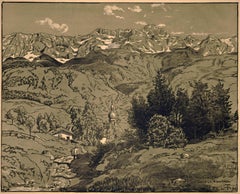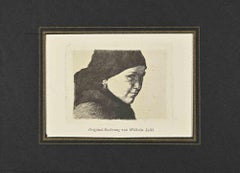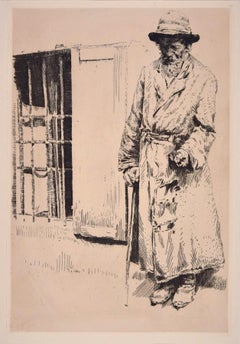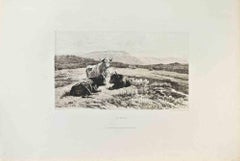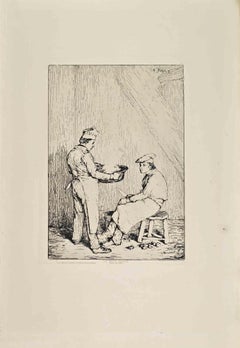Items Similar to Wilhelm Leibl (1844-1900), Original Etchings, Kunstverlag Gurlitt, 1900
Want more images or videos?
Request additional images or videos from the seller
1 of 24
Wilhelm LeiblWilhelm Leibl (1844-1900), Original Etchings, Kunstverlag Gurlitt, 19001900
1900
$2,134.43
£1,590.94
€1,800
CA$2,929.05
A$3,279.75
CHF 1,711.21
MX$39,961.37
NOK 21,714.04
SEK 20,644.27
DKK 13,704.53
Shipping
Retrieving quote...The 1stDibs Promise:
Authenticity Guarantee,
Money-Back Guarantee,
24-Hour Cancellation
About the Item
Wilhelm Leibl (1844 Cologne - 1900 Würzburg), Linen portfolio by Kunstverlag Gurlitt with 11 (of 11) original etchings, 1900, copy no. 67 / 100, 49.8 cm x 32 cm (portfolio size), 43.5 cm x 30 cm (sheet sizes), the etchings printed on old Dutch laid paper each under passepartout, print of the graphics by O. Felsing in Berlin, two sheets title and index. The portfolio contains the etchings Gronau 2, 3, 5, 10 and 13-19: Maler Wopfner /Maler Sperl / Bäuerin / Junge mit Krug / Leibl's Tante / Alte Frau mit Stock / Leibl's Haus / Landschaft / Ochsengespann / Mädchenkopf / Landschaft mit hohen Bäumen
- Portfolio stained in the upper area and somewhat foxed overall, etchings in very good condition
- Atmospheric conciseness -
Published in the year of Wilhelm Leibl's death, this portfolio comprises eleven sheets removed from the original plates. It represents a significant portion of his body of work, consisting of nineteen etchings. Thus, it pays homage to the etcher Leibl.
Inspired by Rembrandt, the images feature strong contrasts of light and dark, lending them a mysterious quality and robust character. These qualities form the basis for Leibl's masterful precision in capturing the motifs.
About the artist
Wilhelm Leibl first studied art with Franz Everhard Bourel and Hermann Heinrich Becker in Cologne. From 1863 to 1869, he attended the Munich Art Academy, where he became a master student of Karl von Piloty. While still a student, he created his work Frau Gedon, which was exhibited in Munich's Glaspalast in 1869 and earned him international admiration. After becoming aware of Leibl, Gustave Courbet invited him to Paris, where he socialized with German artists Hans Thoma, Louis Eysen, and Otto Scholderer, and discovered the art of Édouard Manet. While in Paris, Leibl won the Salon's gold medal for "Frau Gedon," a painting that had already been praised in Munich the previous year. The outbreak of war forced Leibl to return to Munich, where a circle of artists formed around him, including Wilhelm Trübner, Carl Schuch, Theodor Alt, Karl Haider, and Hans Thoma for a time. Leibl retired to the countryside outside Munich in 1873. It was during this time that he became involved in printmaking.Between 1873 and 1877, he produced a total of twelve etchings. In 1878, Leibl moved to Chiemgau and first settled in Berbling. Then, in 1881, he moved to Aibling. In 1893, he moved to Kutterling with the artist Johann Sperl. Following the first public purchases of his work, he was awarded the title of professor in 1891 and became an honorary member of the Berlin Academy in 1893. However, Leibl did not work as a university lecturer. In 1898, he traveled to Holland with the art dealer Ernst Seeger, where he studied the works of Frans Hals and Rembrandt in detail. These artists were important to him.
Due to his choice of motifs and their precise design, Wilhelm Leibl is considered the most important representative of German realism.
GERMAN VERSION
Wilhelm Leibl (1844 Köln - 1900 Würzburg), Leinenmappe des Kunstverlags Gurlitt mit 11 (von 11) Original-Radierungen, 1900. Exemplar Nr. 67 / 100, 49,8 cm x 32 cm (Mappengröße), 43,5 cm x 30 cm (Blattgrößen), die auf altholländischen Bütten gedruckten Radierungen jeweils unter Passepartout, Druck der Graphiken bei O. Felsing in Berlin, zwei Blatt Titel und Inhaltsverzeichnis. Die Mappe enthält die Radierungen Gronau 2, 3, 5, 10 und 13-19: Maler Wopfner /Maler Sperl / Bäuerin / Junge mit Krug / Leibl's Tante / Alte Frau mit Stock / Leibl's Haus / Landschaft / Ochsengespann / Mädchenkopf / Landschaft mit hohen Bäumen
- Mappe im oberen Bereich fleckig und insgesamt etwas stockfleckig, Radierungen in sehr gutem Zustand
- Atmosphärische Prägnanz -
Die in Wilhelm Leibls Todesjahr erschienene Mappe umfasst mit 11 von den Originalplatten abgezogenen Blätter einen großen Teil seines insgesamt 19 Radierungen zählenden druckgraphischen Oeuvres und ist damit eine Hommage an den Radierer Leibl.
In einer an Rembrandt geschulten Weise entfalten die Bilder starke Hell-Dunkel-Kontraste, die ihnen etwas geheimnisvoll Diffuses, zugleich aber auch einen harten Charakter verleihen, der die Grundlage für Leibls meisterhafte Präzision darstellt, mit der er die Motive konkretisiert.
zum Künstler
Nach einem ersten Zeichenuntereicht bei Franz Everhard Bourel und Hermann Heinrich Becker in Köln studierte Wilhelm Leibl von 1863 bis 1869 an der Münchner Kunstakademie und wurde dort Meisterschüler von Karl von Piloty. Sein noch als Student geschaffenen Werk ‚Frau Gedon’, das 1869 im Münchener Glaspalast ausgestellt wurde, brachte ihm internationale Bewunderung ein. Gustave Courbet wurde auf Leibl aufmerksam und lud ihn nach Paris ein, wo er neben Courbet mit den deutschen Künstlern Hans Thoma, Louis Eysen und Otto Scholderer verkehrte und die Kunst Édouard Manets entdeckte. In Paris gewann Leibl die Goldmedaille des Salons für sein bereits im Jahr zuvor in München gerühmtes Gemälde ‚Frau Gedon‘. Durch den Kriegsausbruch war Leibl gezwungen, nach München zurückzukehren, wo sich um seine Person der Leibl-Kreis etablierte, zu dem unter anderen Wilhelm Trübner, Carl Schuch, Theodor Alt, Karl Haider und zeitweilig auch Hans Thoma gehörten. 1873 zog sich Leibl aus München aufs Land zurück. In diese Zeit fällt seine Beschäftigung mit der Druckgrafik. Zwischen 1873 und 1877 fertigt er insgesamt 12 Radierungen an. 1878 zog Leibl in den Chiemgau und ließ sich zunächst in Berbling, 1881 in Aibling und 1893, gemeinsam mit dem Künstler Johann Sperl, in Kutterling nieder. Nach ersten öffentlichen Ankäufen seiner Werke wurde ihm 1891 der Professorentitel verliehen und 1893 erfolgte die Ernennung zum Ehrenmitglied der Berliner Akademie. Leibl wurde allerdings nicht als Hochschullehrer tätig. Gemeinsam mit dem Kunsthändler Ernst Seeger reiste er 1898 nach Holland, wo er nochmals eingehend die Werke der für ihn wichtigen Künstler Frans Hals und Rembrandt studierte.
Mit der Auswahl seiner Motive und ihrer präzisen modellierten Gestaltung gilt Wilhelm Leibl als wichtigster Vertreter der deutschen Ausprägung des Realismus.

About the Seller
5.0
Gold Seller
Premium sellers maintaining a 4.3+ rating and 24-hour response times
Established in 2014
1stDibs seller since 2023
20 sales on 1stDibs
- ShippingRetrieving quote...Shipping from: Berlin, Germany
- Return Policy
Authenticity Guarantee
In the unlikely event there’s an issue with an item’s authenticity, contact us within 1 year for a full refund. DetailsMoney-Back Guarantee
If your item is not as described, is damaged in transit, or does not arrive, contact us within 7 days for a full refund. Details24-Hour Cancellation
You have a 24-hour grace period in which to reconsider your purchase, with no questions asked.Vetted Professional Sellers
Our world-class sellers must adhere to strict standards for service and quality, maintaining the integrity of our listings.Price-Match Guarantee
If you find that a seller listed the same item for a lower price elsewhere, we’ll match it.Trusted Global Delivery
Our best-in-class carrier network provides specialized shipping options worldwide, including custom delivery.More From This Seller
View AllGerhart Hauptmann / - Modern Classicism -
By Emil Orlik
Located in Berlin, DE
Emil Orlik (1870 Prague - 1932 Berlin), Gerhart Hauptmann, 1922. Etching, 17.5 cm x 14 cm (image), 30 cm x 23.8 cm (sheet size), signed in pencil “Emil Orlik” and inscribed “Probedru...
Category
1920s Impressionist Figurative Prints
Materials
Paper
Self / - Inversion -
Located in Berlin, DE
Kurt Mühlenhaupt (1921 Klein Ziescht - 2006 Berlin), Myself, c. 1975. Woodcut, 32 cm x 29 cm (image), 36.5 cm x 32.5 cm (sheet size), signed in pencil lower right and titled “Selbst....
Category
1970s Realist Figurative Prints
Materials
Paper
General Wilhelm von Blume - Visionary retrospective -
Located in Berlin, DE
Bernhard Pankok (1872 Münster - 1943 Baierbrunn), General Wilhelm von Blume, 1915, aquatint etching, 34 x 29.5 cm (sheet size), 26 x 22 cm (plate size), signed in the plate at upper left, in pencil at lower right and dated in pencil at lower left.
- At lower left old collection stamp, at the right broad margin with a small spot, otherwise very good condition.
About the artwork
The 1915 aquatint etching of General Wilhelm von Blume is based on a 1912 oil painting in the LWL-Museum für Kunst und Kultur in Münster. A second oil portrait of the general by Pankok is in the Staatsgalerie Stuttgart. When Pankok painted the first oil portrait in 1912, the general had already been retired for 16 years. It is therefore a retrospective portrait. Accordingly, the orientation of his head is such that he is looking back in both the oil painting and the etching. Without fixing on anything in particular, he looks thoughtfully inwards and reflects on his life. Uniformed and highly endowed, it is his military activities in particular that he is reviewing attentively and, as his gaze reveals, quite critically.
Pankok has literally written the sum of his experiences on Wilhelm von Blume's face: The physiognomy is a veritable landscape of folds, furrows, ridges and gullies, all the more striking against the flat background. It is clear that each of the medals was also won through suffering. However, by breaking the boundaries of the picture, his bust appears as an unshakable massif, which gives the general a stoic quality.
The fact that the design of the portrait was important to Pankok can be seen from the different versions, the present sheet being the third and probably final revision, which Pankok dates precisely to 18 February 1915. Compared with the previous state, the light background now has a dark area against which the sitter's face stands out, the dark background in turn combining with the uniform to create a new tension in the picture.
Pankok's taking up of the portrait of the high-ranking military veteran and its graphic reproduction can also be seen in relation to the First World War, which had broken out in the meantime. In the face of modern weapons of mass destruction, Wilhelm von Blume's warfare and military writings were relics of a bygone, more value-oriented era.
About the artist
After studying at the Düsseldorf Art Academy from 1889 to 1891 under Heinrich Lauenstein, Adolf Schill, Hugo Crola, and Peter Janssen the Elder, Bernhard Pankok went to Munich in 1892, where he worked primarily as a graphic artist for the two major Jugendstil magazines "Pan" and "Jugend," which established his artistic success. Through this work he met Emil Orlik, with whom he had a lifelong friendship.
In 1897, he exhibited his first furniture, and in 1898, together with Richard Riemerschmid, Bruno Paul and Hermann Obrist...
Category
1910s Realist Portrait Prints
Materials
Etching
$455 Sale Price
20% Off
S. Anton Patenkirchen / - The Home of the Landscape -
Located in Berlin, DE
Hans Thoma (1839 Bernau - 1924 Karlsruhe), S. Anton Patenkirchen, 1895. Algraph on strong wove paper, published by Breitkopf und Härtel in Leipzig as ‘Zeitgenössisches Kunstblatt Nr....
Category
1890s Realist Figurative Prints
Materials
Paper
Greed / - The Poverty of Wealth -
Located in Berlin, DE
Rudolf Nehmer (1912 Bobersberg - 1983 Dresden), The birds under the sky, 1948. Woodcut on yellowish wove paper, 11 cm x 18 cm (depiction), 43 cm x 30 cm (sheet size), signed “Rud.[ol...
Category
1940s Realist Figurative Prints
Materials
Woodcut
Blessed are the spiritually poor / - The Abundance of Poverty -
Located in Berlin, DE
Rudolf Nehmer (1912 Bobersberg - 1983 Dresden), Blessed are the spiritually poor, 1948. Woodcut on yellowish wove paper, 20 cm x 15 cm (image), 45 cm x 30 cm (sheet size), signed “Ru...
Category
1940s Realist Figurative Prints
Materials
Woodcut
You May Also Like
Portrait - Etching by Wilhelm Leibl - Early 20th Century
Located in Roma, IT
Portrait is an etching on paper realized by Wilhelm Leibl in the Early-20th Century.
The artwork is depicted Through strong strokes.
Good conditions with slight foxing.
Category
Early 20th Century Modern Figurative Prints
Materials
Etching
Galizischer Bletter . Original Etching by Erich Wolsfeld - 1915
Located in Roma, IT
Galizischer Bletter is a fine black and white etching on cream-colored paper, realized by Erich Wolfsfeld ( Krojanke, 1884 - London, 1956).
From the portfolio Freunde Graphischer Kunst, Leipzig, 1915.
In excellent condition, with the original cream-colored cardboard passepartout included with the drystamp of the publishing house logo "III. s" at the center on lower margin. A little rip on the lower right corner of the passepartout.
This modern original print representing a street homeless begging demonstrates a great human and pictorial sensibility and surely is an artwork conceived in his Roman period when this kind of subjects was frequent.
Erich Wolfsfeld (Krojanke, 1884 - London, 1956).
Erich Wolfsfeld learned to etch in the studio of Hans Meyer, From 1907 worked in Rome, where he met Otto Greiner...
Category
1910s Modern Figurative Prints
Materials
Etching
En Écosse - Etching by Otto Weber - 1870s
Located in Roma, IT
En Écosse is an artwork realized by Otto Weber in the 1870s.
Etching.
Image size:19x31
Good conditions.
Realized for the "Société des Aquafortistes. Born on the initiative of t...
Category
1870s Modern Figurative Prints
Materials
Etching
Le Mets Brule - Etching by F. Ribot - 1860s
Located in Roma, IT
Le Mets Brule is a black and White etching realized by F. Ribot in the 1860s.
Titled in the lower
Image Size: 31x22
Very good impression.
Realized for the "Société des Aquaforti...
Category
1860s Modern Figurative Prints
Materials
Etching
Weibliches Bildniss - Etching by Nicolai Massalow - 19th Century
Located in Roma, IT
Weibliches Bildniss is an original Etching realized by Nicolai Massalow after Rembrandt in the 19th Century.
Good condition.
Category
19th Century Modern Figurative Prints
Materials
Etching
Il Robivecchi - Original Etching by Aldo Borgonzoni - Late 20th Century
By Aldo Borgonzoni
Located in Roma, IT
Il Robivecchi is an original etching on paper realized by Aldo Borgonzoni (1913-2004).
Hand-signed on the left margin.
The state of preservation of t...
Category
Late 20th Century Figurative Prints
Materials
Etching
More Ways To Browse
Antique Kunst
White Fox Fur
Haus Otto
Picasso Pigeons Lithograph
Picasso Saltimbanques
Raymond Grandjean
Romare Bearden Jazz Series
Romero Britto On Sale
Salvador Dali Lithograph Don Quixote
Seven Deadly Sins
Sexy Marilyn Monroe
Southern Officials Hat
Vintage Crawling Baby
Vintage Denver Poster
Vintage Orient Express Posters
Vintage Paper Kites
William J Hat
Arthur Edwards
